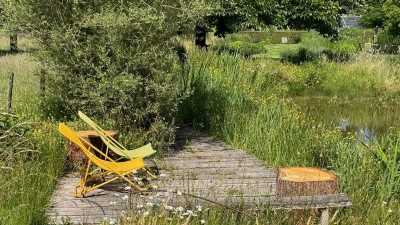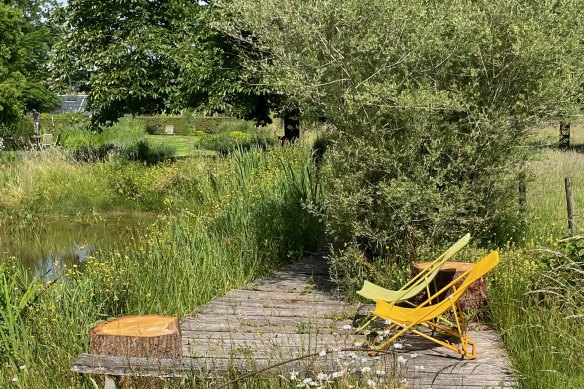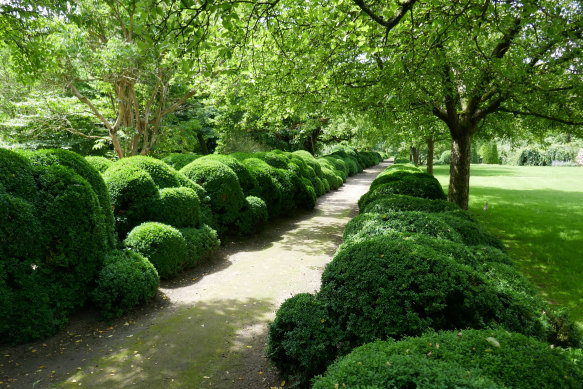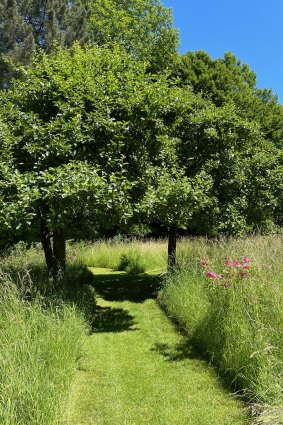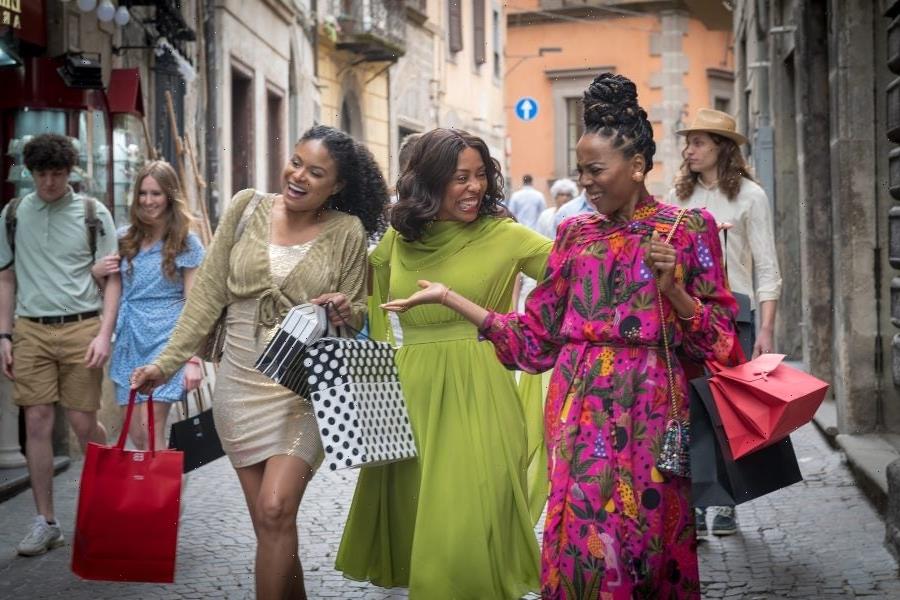One of the best ways to improve your gardening is to look at what other gardeners are doing. Scrutinising your neighbourhood is the obvious place to start but it’s also inspiring to cast your eyes further afield.
Sandra McMahon recently honed in on Belgium. One of the smallest countries in Europe, Belgium is better known for its chocolates than for its horticulture. Unlike the Netherlands, which sits to its north, Belgium doesn’t have a superstar like Piet Oudolf filling the world with grasses, perennials and floating hazes of seed heads.
Chris Ghyselen keeps a tight reign on some plants while leaving others to explode in informality. Credit:Sandra McMahon
While Germany, which Belgium also borders, has established an international profile for habitat-based planting design and France, another neighbour, is leading the way with Mediterranean-climate gardens that need no irrigation even through hot, dry summers, Belgium has tended to fly under the radar.
But McMahon, a landscape designer, says it’s time we took more note. “It really punches above its weight. I am in love with Belgium.”
The late Jacques Wirtz was especially inventive with the hedging shears.Credit:Sandra McMahon
McMahon will speak about landscape design Belgium-style in a lecture at Burnley next week. She is especially enthusiastic about how the Belgians have taken the age-old approach of pairing the formal with the informal, and then pushed it to extremes. Everything, she says, is taken up a notch.
“It’s the yin and yang but I think they do it differently, it’s more sculptural. It makes me want to be braver,” she says. Surely no one was braver on the pruning front than Belgian landscape architect Jacques Wirtz, who died four years ago at the age of 93, and who, over the course of a much-acclaimed career proved especially inventive with the hedging shears.
“He was a master at sculpting plants to anchor a garden and create a sense of place,” McMahon says. “I have never liked paths lined with exactly the same, symmetrical thing. I love a more organic placement of clusters and that is what Jacques Wirtz did so well. He designed gardens with thousands of box plants over hundreds of metres and he shaped them in very interesting ways.”
Contemporary Belgian landscape architect Chris Ghyselen, who McMahon says also likes to keep a tight reign on some plants while leaving others “to explode in informality and wildness” is another inspiration, as is the Flanders-based landscape designer Jasmin Moris, who leaves pasture grasses to wander among roses and other shrubs “as if the roses are escapees”.
A private arboretum in Belgium that provides refuge and sustenance for pollinators.Credit:Sandra McMahon
But, given how different Belgium’s climate is to that of Victoria – the country’s average rainfall is around 820mm (compared to Melbourne’s 630mm) and fairly evenly distributed throughout the year, while its summer temperatures rarely exceed about 24°C – McMahon says she will opt for different plants to achieve a similar look.
Instead of clipping box and yew for the formal areas, she suggests manipulating tough Australian species like westringias, Rhagodia spinescens, Correa alba, and Syzgium australe ‘Tiny Trev’. As for the looser counterpoints, she says chocolate lilies, vanilla lilies, paper daisies, sticky everlasting, scaevoloa, wallaby grasses and some of the finer lomandras would all work well.
When it comes to leaving grasses to grow long, sometimes with naturalistic paths mown through, she encourages us to try softer-leaved native grasses such as ‘Oxley’ wallaby grass, kangaroo grass and Microleana stipoides, all of which lend an air that’s both dynamic and playful.
Wilder, less tidy gardens have the added benefit of providing refuge and sustenance for bees and other pollinating insects, particularly relevant given the recent Varroa mite outbreak in honey bee hives in New South Wales and the ongoing threats posed to Australia’s native bees by climate change.
While many Australian gardeners have been actively gardening for bees for years now, McMahon says authorities in Belgium –as well as other European countries – have gone further, mounting campaigns for people to create more ecological gardens that are full of plants and insects.
“There’s a real push to reintroduce indigenous species back into grazing fields and in (urban) streets every spare spot is filled with exuberant flowering plants. There are billboards encouraging people to have less concrete and more room for bees, they are really putting it in people’s faces.”
“I think I saw a lot more of that unkempt look in Belgium (than in other parts of Europe),” McMahon says. It’s an acquired taste at first but then it’s just beautiful. It made me think we don’t tolerate those things so well and maybe we need to look at these ideas through a new lens.”
Sandra McMahon’s illustrated talk, Tradition & Innovation in Belgian Landscape Design is hosted by Friends of Burnley Gardens and is at 7pm for 7.30pm on Wednesday 24 August in the main building at Burnley, $20/$5 members. Go to trybooking.com/CBHUQ to make a booking. McMahon will also lead tours to Belgium in 2023 and 2024 for Australians Studying Abroad.
Make the most of your health, relationships, fitness and nutrition with our Live Well newsletter. Get it in your inbox every Monday.
Most Viewed in Lifestyle
From our partners
Source: Read Full Article
